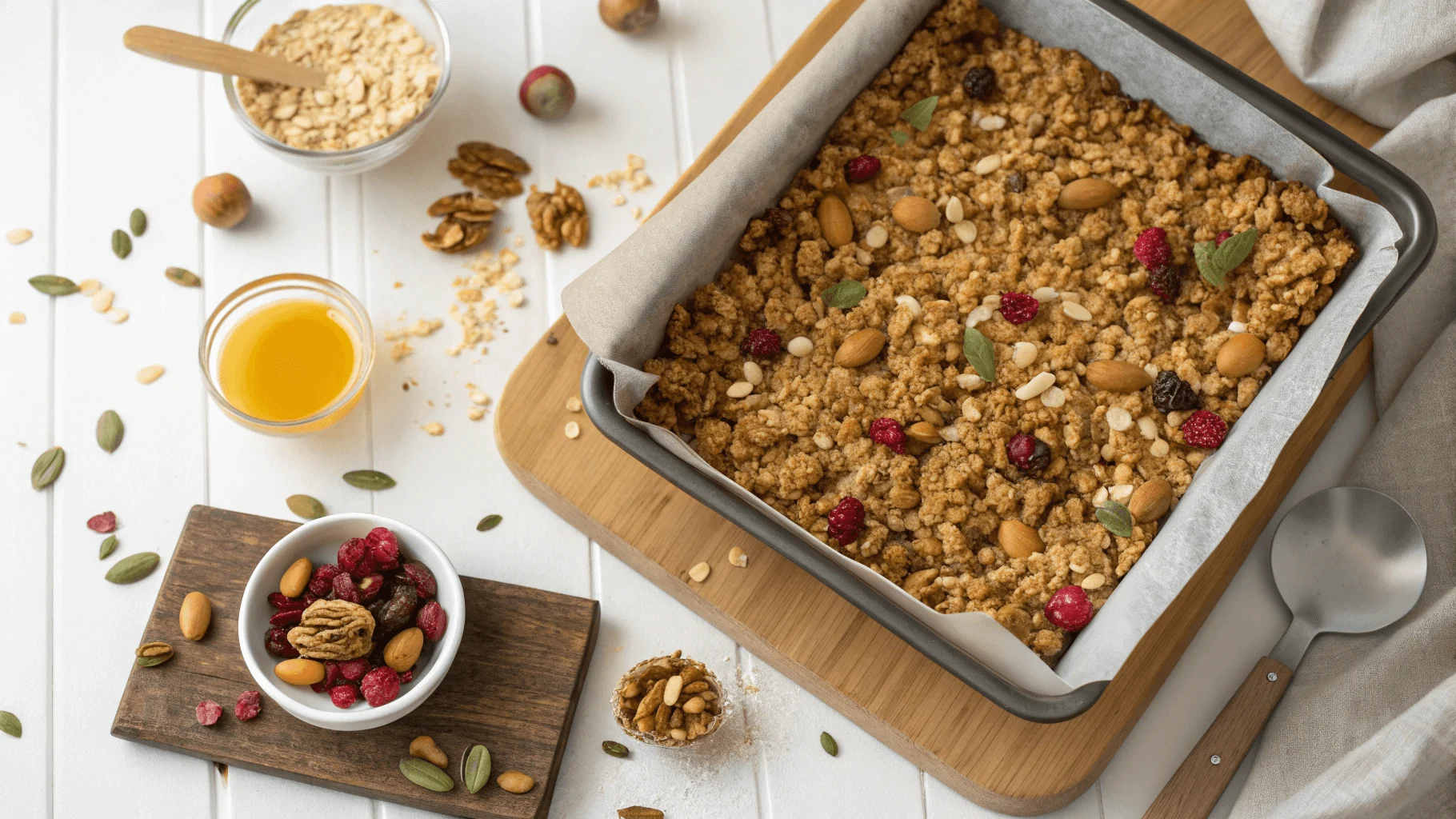Sausage balls are a popular and delicious dish, often enjoyed as appetizers or snacks for various occasions. However, a common issue many home cooks face is that their sausage balls turn out dry and lacking in moisture. If you’ve ever wondered, why are my sausage balls so dry?, you’re not alone. Several factors could be responsible for this problem, including overcooking, the type of sausage meat used, and the ingredients in the mixture. In this article, we will examine the most common reasons behind dry sausage balls and provide practical tips on how to prevent or fix them. Whether you’re a beginner or an experienced cook, understanding these factors will help you create moist, flavorful sausage balls every time you bake them.
Common Reasons for Dry Sausage Balls
There are several reasons why your sausage balls may turn out dry, and identifying the culprit is the first step to achieving a moist and flavorful result. Below, we will explore some of the most common causes.
Overcooking Sausage Balls: A Key Cause of Dryness
Overcooking sausage balls is one of the most frequent reasons for dryness. When sausage balls are exposed to high heat for too long, they lose moisture and become tough. To prevent this, monitor the cooking time closely. If you need guidance on reheating or cooking, check out the ultimate guide for reheating sausage balls without Bisquick.
How Lean Sausage Meat Leads to Dry Sausage Balls
Using lean sausage meat in the recipe is another common mistake. While lean meats are lower in fat, they often lack the moisture that fattier cuts provide. Instead, consider using a sausage with a higher fat content to maintain the proper moisture balance. If you’re exploring alternatives to Bisquick, consider reading about how to make perfect sausage balls without Bisquick.
The Importance of Binding Ingredients to Prevent Dryness
Binding ingredients like eggs, breadcrumbs, or flour play a critical role in holding the sausage balls together while adding moisture. If your sausage ball mixture lacks adequate binding agents, the balls may not hold together properly and can dry out during cooking. The key is to find the right balance of binding ingredients to keep the sausage balls moist and cohesive. Too much flour or breadcrumbs, however, can lead to a dry texture, so moderation is essential.
How Too Much Flour or Breadcrumbs Can Dry Out Sausage Balls
While flour and breadcrumbs are often used to help bind sausage balls together, using too much of these ingredients can lead to a dry, crumbly texture. These ingredients absorb moisture, and if you overuse them, they can soak up all the moisture in the mixture, resulting in dry sausage balls. To avoid this, ensure that you follow the recipe’s measurements carefully and use just enough flour or breadcrumbs to hold the mixture together.
Why Not Enough Moisture in the Mixture Causes Dryness
Moisture is key to ensuring that your sausage balls stay juicy and tender. If the mixture lacks enough moisture, the balls will inevitably turn out dry. Some common sources of moisture include eggs, milk, or even broth. Adding extra moisture helps to keep the mixture from becoming too dry, which is especially important when using lean meats or dry binding agents like breadcrumbs. Be sure to adjust the liquid content based on the consistency of the mixture.
How to Prevent Dry Sausage Balls
Now that we’ve covered some of the most common reasons why sausage balls can be dry, let’s look at how to prevent this issue in the first place. By following the right techniques, you can ensure your sausage balls turn out moist and flavorful every time.
Selecting the Right Sausage Meat for Moist Sausage Balls
Choosing the right sausage meat is crucial when making sausage balls. As mentioned earlier, lean sausage meat can result in dry balls. To avoid this, opt for sausage with a higher fat content. The fat will keep the sausage balls moist during baking, creating a tender and juicy texture. Additionally, consider using sausage with flavorful seasonings, as this will enhance the taste of your sausage balls without needing additional flavoring. You can also explore helpful substitutes for other ingredients in recipes, as detailed in the best Bisquick substitutes for sausage balls.
The Role of Eggs in Keeping Sausage Balls Moist
Eggs are an essential ingredient when it comes to binding sausage balls and keeping them moist. They not only help to bind the ingredients together but also add moisture and structure to the mixture. When preparing sausage balls, be sure to use enough eggs to create a cohesive mixture that isn’t too dry. Eggs will also help the sausage balls maintain their shape while baking.
Choosing the Right Binding Agents
While eggs are important, it’s also essential to select the right binding agents to complement the meat and eggs. Breadcrumbs, oats, and flour are common binding ingredients, but the key is to use them in moderation. Choose a binding agent that will hold the mixture together without absorbing too much moisture. For a healthier option, consider using almond flour or oats as a substitute for traditional flour or breadcrumbs. These ingredients will help maintain the moisture level in the sausage balls.
How to Add Extra Moisture to the Mixture for Moist Sausage Balls
If you find that your sausage ball mixture is too dry, adding extra moisture can make all the difference. A splash of milk, chicken broth, or even cream can help loosen up the mixture and provide the necessary moisture to prevent dryness. Additionally, some recipes call for adding grated vegetables like zucchini or carrots to provide natural moisture. If you’re using lean sausage, consider adding a bit of olive oil to increase the fat content and help keep the sausage balls moist.
Baking at the Right Temperature to Prevent Dry Sausage Balls
Baking at the correct temperature is essential for preventing dry sausage balls. If the oven is too hot, the sausage balls may cook too quickly on the outside while leaving the inside dry. Conversely, if the temperature is too low, the sausage balls might cook unevenly. The ideal temperature for baking sausage balls is around 350°F (175°C). This allows for even cooking, resulting in tender and moist sausage balls.
The Importance of Sausage Fat in Keeping Sausage Balls Moist
Sausage fat plays a crucial role in ensuring your sausage balls stay moist and tender. Fat is not just an added calorie; it is an essential ingredient that contributes significantly to the flavor, texture, and moisture content of the sausage balls. Without enough fat, your sausage balls can become dry and tough, which is a common problem when using lean sausage meat. Understanding how fat works in sausage balls can help you prevent dryness and achieve the perfect balance of flavors and texture.
Why Sausage Fat is Crucial for Moisture
Fat is a key component in sausage meat, and it plays a critical role in keeping the sausage balls moist. As the sausage balls cook, the fat melts, which helps to keep the mixture juicy and tender. Fat also adds flavor, enhancing the overall taste of the sausage balls. When making sausage balls, be sure to use sausage with a good amount of fat, as this will ensure that your sausage balls are neither dry nor bland.
Types of Sausage Fat and Their Impact on Moisture
Different types of sausage fat can have varying effects on the texture of your sausage balls. Pork sausage, for example, tends to have a higher fat content than turkey or chicken sausage. Pork fat provides a rich, moist texture that helps the sausage balls stay juicy during baking. If you’re using leaner sausages like turkey sausage, you may need to add extra fat, such as olive oil or butter, to compensate for the lack of natural fat.
How Lean Sausage Meat Affects Moisture Content
Lean sausage meat, while lower in fat, can significantly impact the moisture content of your sausage balls. Without enough fat, the balls may turn out dry and tough. When using lean sausage, it’s important to adjust the recipe by adding moisture through liquids or fat sources. This will help to prevent the sausage balls from becoming dry and ensure that they maintain a desirable texture and flavor.
How to Fix Dry Sausage Balls After Baking
If you’ve already baked your sausage balls and they’ve turned out dry, all is not lost! There are several ways you can fix dry sausage balls and restore their moisture. Below are some simple methods that can help revive the texture and flavor of your sausage balls, ensuring they are tender and enjoyable.
Rehydrating with Broth or Sauce
One effective method for reviving dry sausage balls is to rehydrate them with broth or sauce. Simply place the sausage balls in a baking dish and pour a little chicken or beef broth over them. Cover with foil and bake at a low temperature for a short time. The broth will soak into the sausage balls, adding moisture and flavor. Alternatively, you can also use tomato sauce or gravy to rehydrate the sausage balls, depending on your preference.
Correcting the Texture with More Binding Ingredients
If your sausage balls are too dry and crumbly, adding extra binding ingredients can help correct the texture. For example, you can add more egg or breadcrumbs to the mixture before reheating. This will help bind the ingredients together and restore the moisture balance. If you’re concerned about using too many breadcrumbs, try adding a splash of milk or a bit of olive oil to the mixture. This can provide the moisture needed to improve the texture and prevent further dryness.
Adding Moisture While Reheating
When reheating dry sausage balls, consider adding a bit of moisture to prevent them from becoming even drier. You can place the sausage balls in a covered dish and add a small amount of broth, milk, or sauce to the dish. Heat them in the oven at a low temperature, covered, to help the moisture permeate the sausage balls and restore their texture.
FAQs
Why are my sausage balls so dry even after using fatty sausage meat?
Dry sausage balls can result from overcooking or using too many dry ingredients like flour or breadcrumbs. Even fatty sausage can become dry if baked too long or if the mixture lacks enough moisture. Make sure to monitor your cooking time and adjust the amount of dry ingredients to prevent moisture loss.
Can I use turkey sausage to make sausage balls?
Yes, turkey sausage can be used, but it is leaner than pork sausage, which may result in drier sausage balls. If you use turkey sausage, consider adding extra fat or moisture (like olive oil or broth) to ensure your sausage balls stay juicy.
How can I fix dry sausage balls after baking?
If your sausage balls are too dry after baking, you can rehydrate them with a bit of broth or sauce. Alternatively, you can correct the texture by adding more binding ingredients such as eggs or breadcrumbs when reheating, which will help restore moisture.
What is the best way to prevent sausage balls from drying out while baking?
To prevent sausage balls from drying out, bake them at the correct temperature of around 350°F or 175°C. Avoid overcooking them to ensure they remain moist and tender during baking. Be sure to use enough fat and moisture in the mixture to keep the sausage balls juicy. Consider adding binding agents like eggs to help retain moisture throughout the baking process.
How do I add moisture to the sausage ball mixture?
To add moisture to the mixture, you can incorporate liquids like milk, broth, or even grated vegetables like zucchini or carrots. These ingredients will help prevent the mixture from becoming too dry and ensure the sausage balls remain juicy.
Conclusion
In conclusion, understanding why are my sausage balls so dry is the first step toward creating a perfectly moist and flavorful dish. By addressing common factors such as overcooking, using lean meat, and not incorporating enough moisture, you can ensure your sausage balls stay tender and juicy. The right combination of fat, binding agents, and moisture is essential in preventing dryness and achieving the ideal texture. Whether you’re making sausage balls for a party, a family gathering, or simply as a snack, following these tips will help you bake sausage balls that are always moist, flavorful, and enjoyable. Remember, a little extra attention to ingredient selection and cooking time can go a long way in creating the best sausage balls possible!






4 thoughts on “How To Prevent Dry Sausage Balls: Common Mistakes To Avoid”